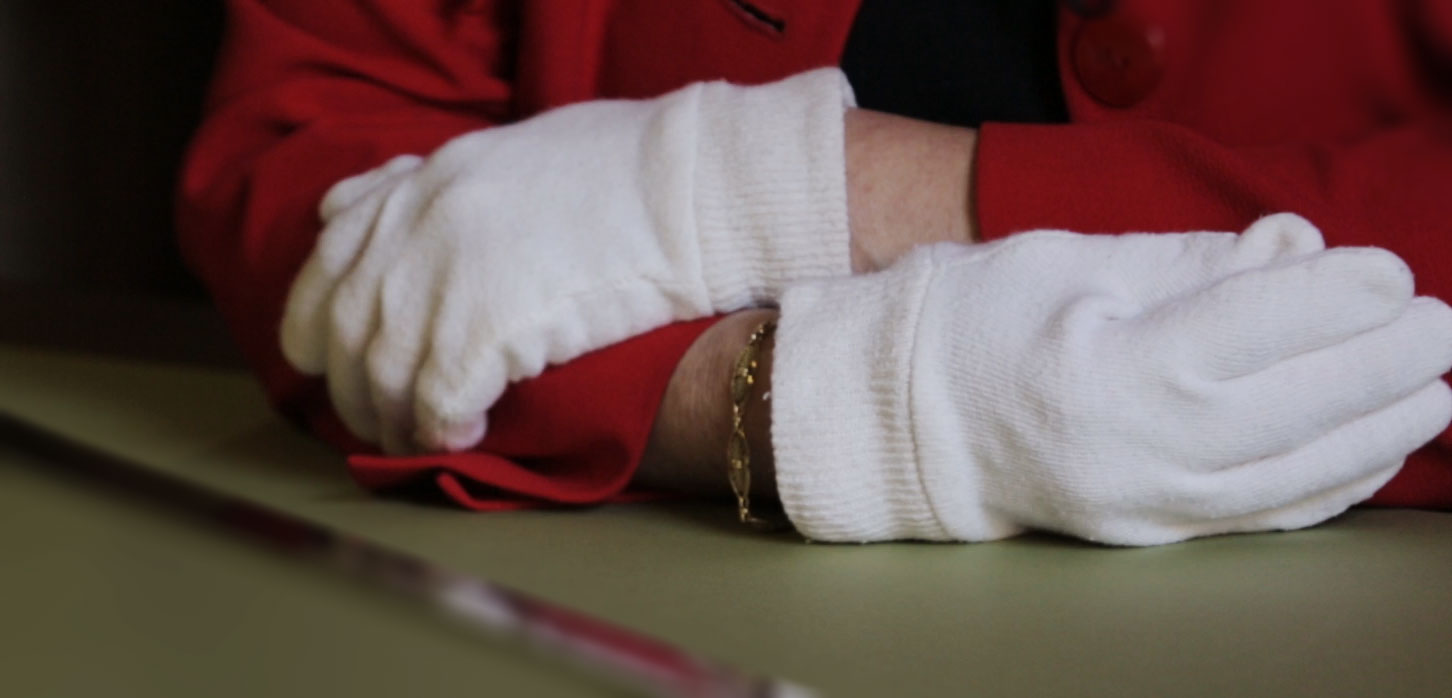How much does a fingerprint weigh?
Enough to concern mass metrologists and museum curators.
•

Handling artifacts with gloves at the French National Archives.
Of course you've heard that the kilogram is losing weight. How much?
A commonly-published quantity is 50 micrograms or "about the weight of a fingerprint."
For example, these three articles and blog post: Kilogram has lost the weight of a fingerprint Boing Boing (September 2007) and Kilogram prototype mysteriously loses weight (NBC News, 2007) and Meanwhile Apropos Of Nothing- The Weight Of A Fingerprint (Ten Percent Blog, 2007)
But whose finger? Has the person been eating Doritos?
Without a reference for the weight of a fingerprint, I feel uneasy passing along that comparison.
I remembered when my math professor J. Jerry Uhl questioned his own and everyone's scholarship, after reading Stephen J. Gould's "The Case of the Creeping Fox Terrier Clone" (Bully for Brontosaurus: Reflections in Natural History, 1991).
In that essay, Gould recalled a comparison of a certain horse to the size of a fox terrier. Gould himself was familiar with that comparison, but one day realized he didn't know how big a fox terrier was. Gould tracked the disparate references back to a single source, and then pointed out the dangers out "thoughtless copying." To me, Professor Uhl wondered if "we [professors] were just passing along things we didn't really know, and pretending that we were educating others."
I couldn't find a scholarly article about fingerprints' weights, but my science advisor, Michael Trott, did — in curation studies: "Water content of latent fingerprints – Dispelling the myth," Forensic Science International 266 (2016) p. 134–138. http://dx.doi.org/10.1016/j.forsciint.2016.05.016
The paper's author Terry Kent says it's hard to get precise numbers because of so many factors, but the estimates from other experiments average about 4 micrograms of stuff, including fats, salts, and at most 20% water. And according to author's own experiments, fingerprints could be 10 times the average, which would be about 40 micrograms. The context of Kent's paper is to debunk 2005-2006 reports that fingerprints are 99% water and so curators and patrons can forgo gloves when handling rare books and artifacts. Not true!
Kent cites Prue McKay's paper (2008 AICCM Book, Paper and Photographic Materials Symposium) where she describes how they simulate the effects of fingerprints over time, by handling then heating manuscripts to specific temperatures and then reviewing changes in color and pH. Unwashed, antibacterialized, and washed hands were all more damaging to papers than cotton or nitrile gloves. Perhaps the curator's favorite bumper sticker will plagiarize the subtitle of McKay's paper "You can't handle the truth, unless you're wearing gloves."
While we may get rid of artifacts as metrology standards, they are still fascinating and valuable for many reasons. Making this film I have been able to see, and sometimes handle, rare artifacts and books, although I typically don't touch the artifacts to protect them, and because I usually have my hands on the camera.
So I'm fine with saying that the IPK has lost less than the weight of a fingerprint, and I would be fine with putting on gloves before touching it. But I can't imagine anyone getting permission to touch it with or without gloves.